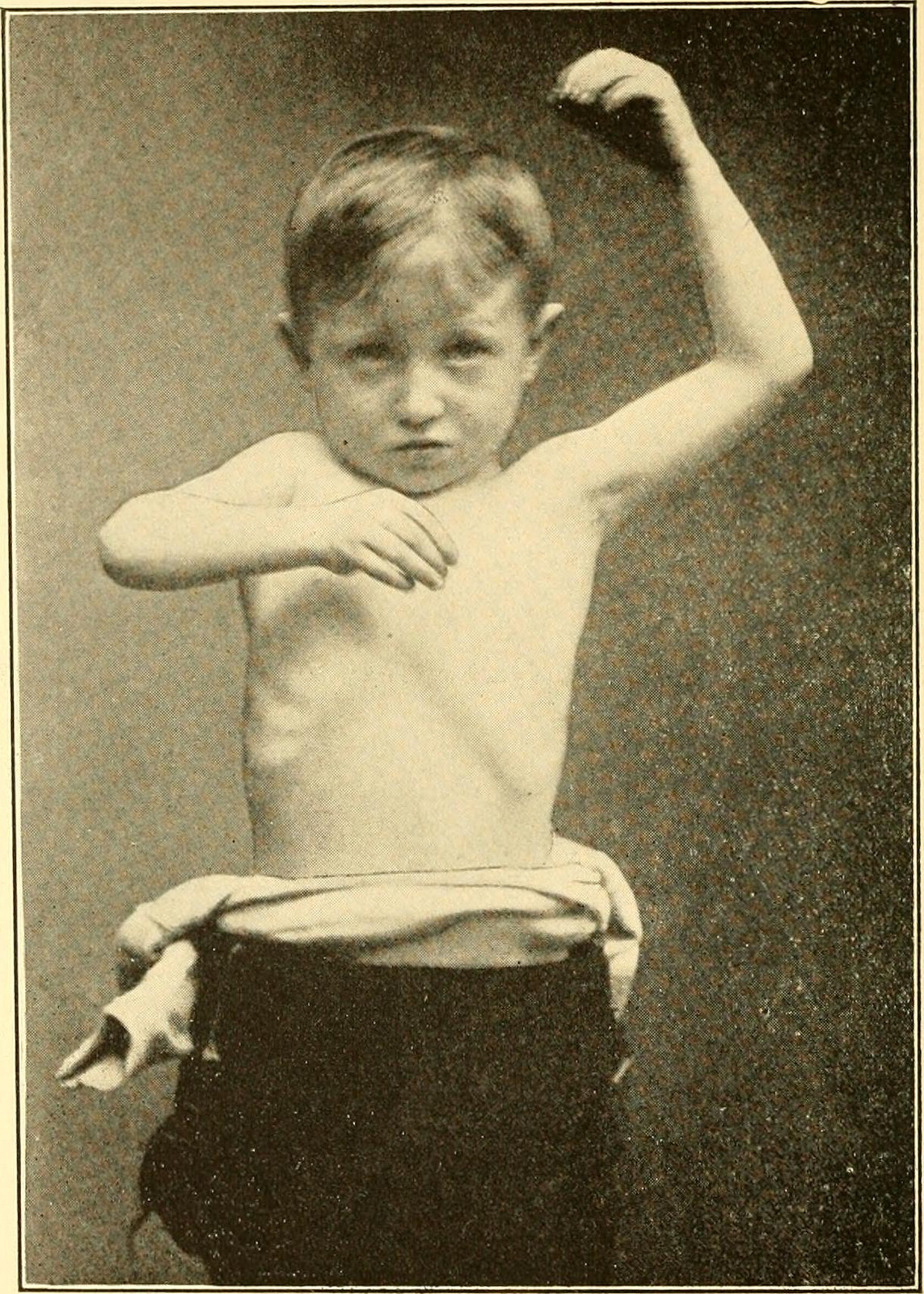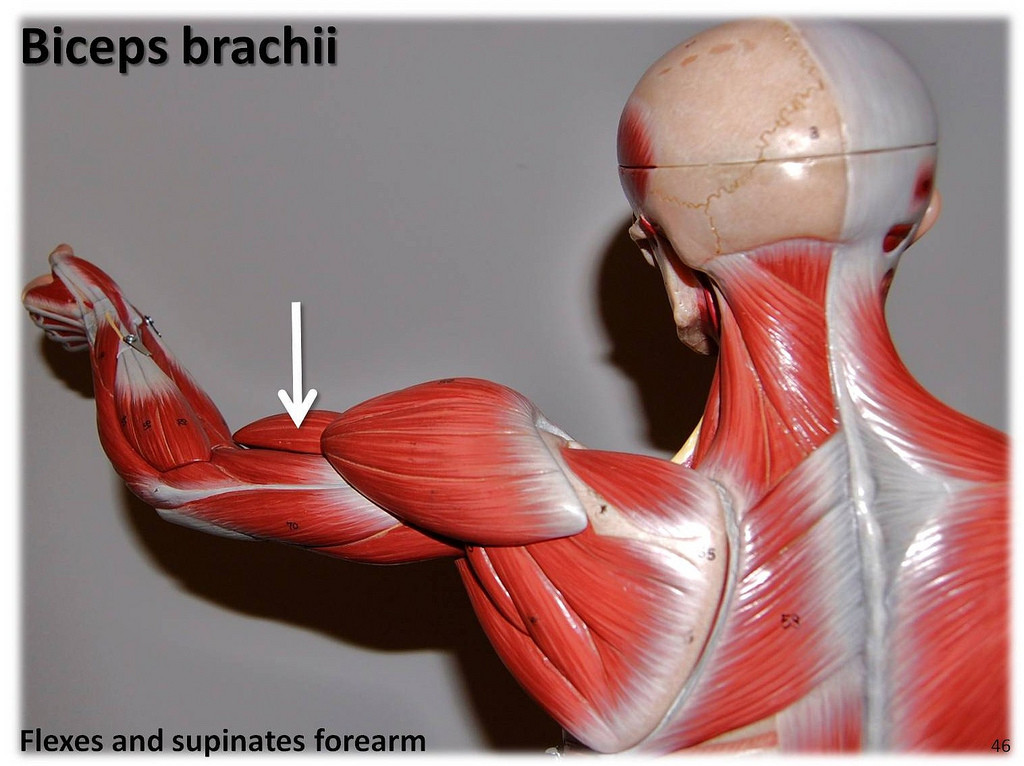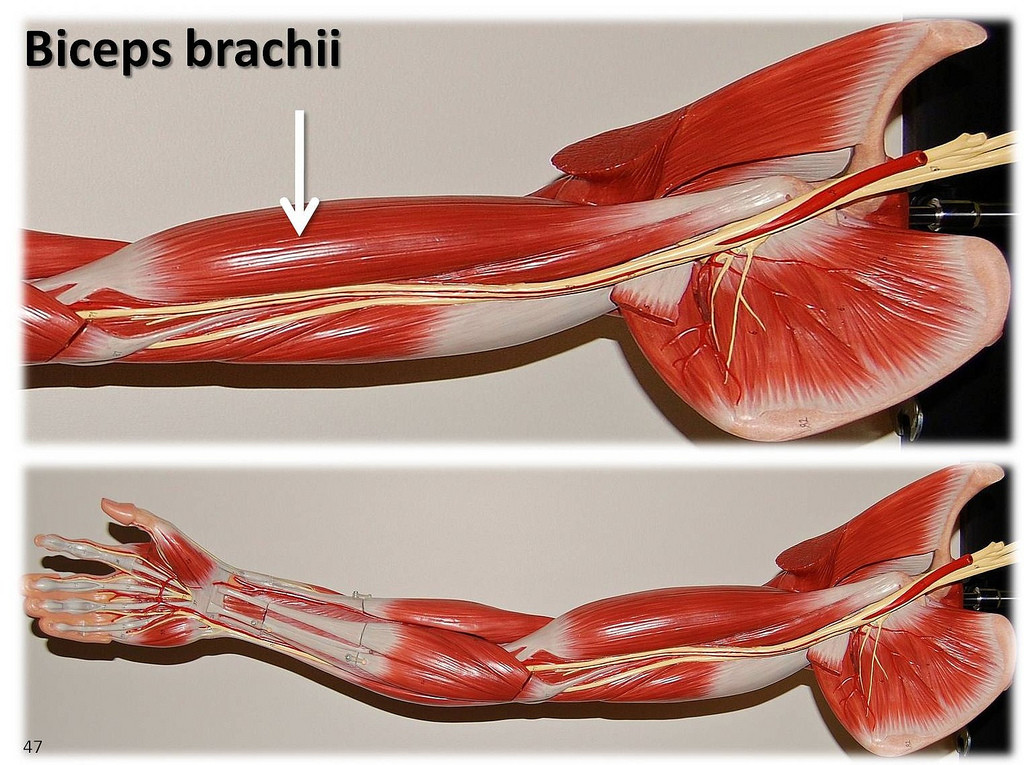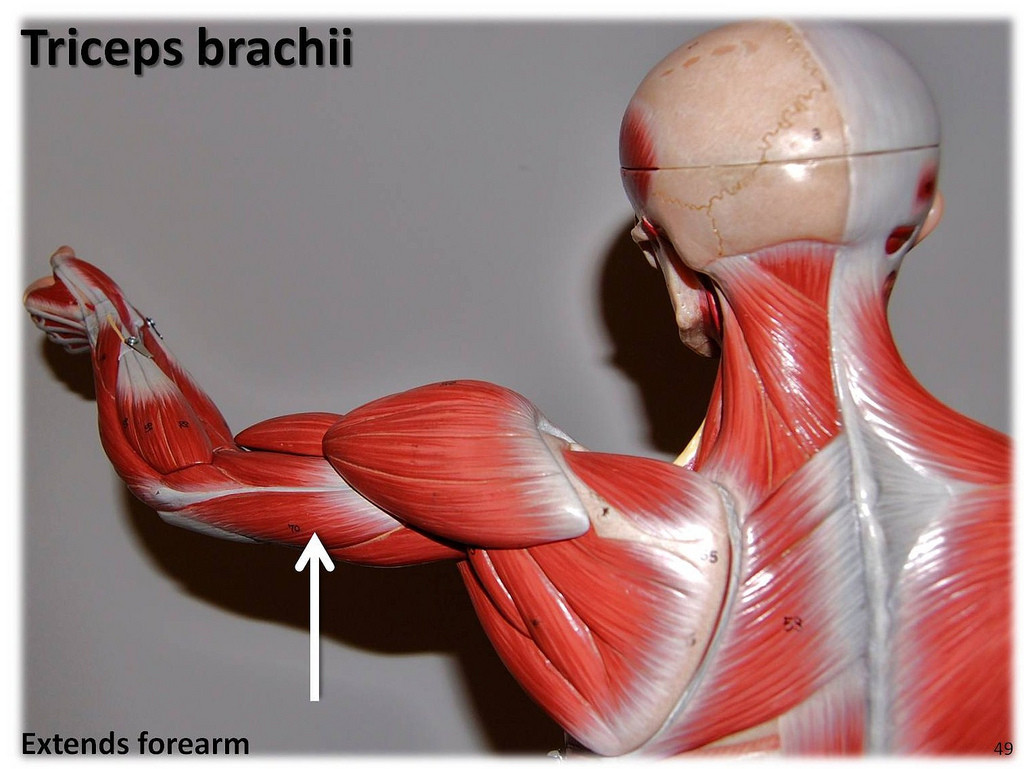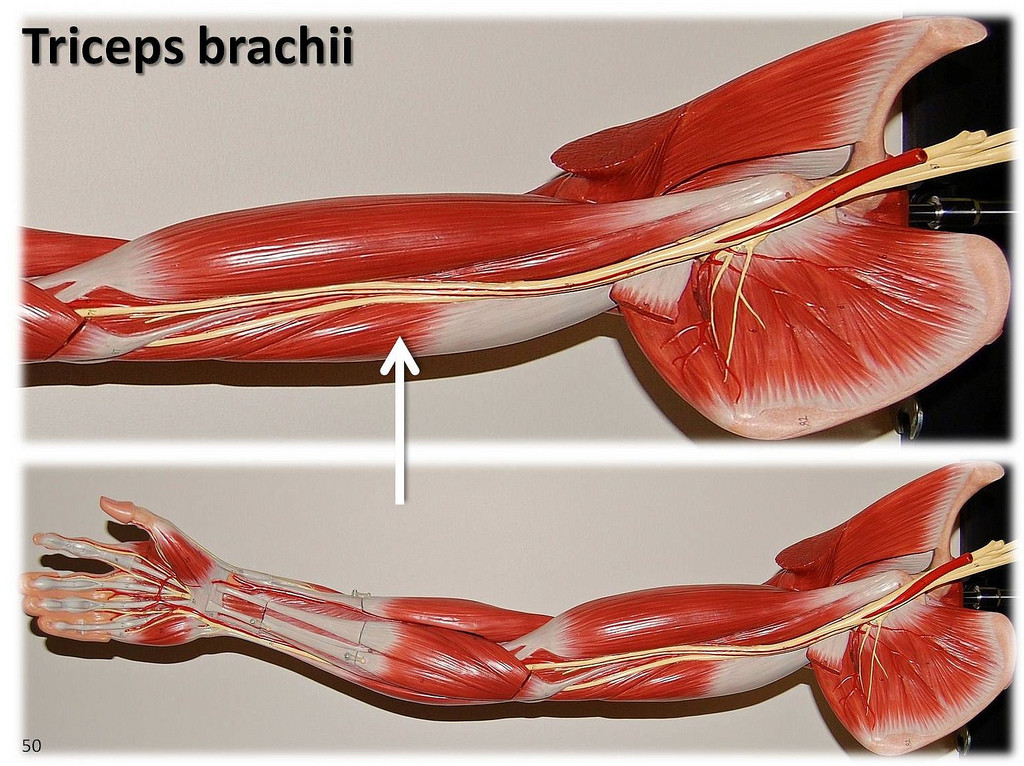In “Should Tattooing be Taboo?” April 2015, Spanking FIT examined the controversy surrounding modern-day tattooing practices and associated health risks. Legitimate concerns raised led us to embark on our “Healthy Body Art for the ‘Boys’ & ‘Girls'” series containing exercise sets designed specifically to enhance physical attractiveness but without the potential hazards of unnatural “body art” such as tattoos and piercings. Previous segments introduced simple exercises for women and men to acquire “Venus Dimples” (Part I), for enhancing the “Butt” (Part II), for developing “Broad Shoulders (Part III), and for acquiring an impressive “Chest” (Part IV).
In this current healthy body art segment, Spanking FIT illustrates how to enhance the two most important muscles of the upper arm: biceps bracii ( or simply “biceps”) and the triceps brachii (or simply “triceps”) Most men have fond youthful memories of having a female or a male mate admiringly feel their biceps. (Lucky for these young ladies, such behavior is not regarded as sexual harassment. Double standard?) We begin by inquiring into just how important musculature, including well-developed biceps and triceps, is in attracting mates.
Is BIGGER better when it comes to biceps?
On the question of the degree to which male musculature is a “turn on” for women, Spanking FIT uncovered the “Male Body Survey“, conducted by popular online magazine Psychology Today (Nov./ Dec. 1993 issue) According to these psych surveyors, when asked to rank male body types, most women ranked “moderate muscle mass” in first place, and “competitive muscle mass” in fourth place, only. On the other hand, when men were asked to guess women’s preferences, “competitive muscle mass” ranked considerably higher. Next, women were asked how important “noticeable muscles on a man” were to them. The men were also asked how important their own muscular development was to themselves. Surveyors claimed that twice as many women as men responded with “muscles do not matter at all“. Keep in mind that these are far from firm scientific findings. Although the number of survey respondents was quite large (1500 according to study authors), their results may be subject to non-response bias which occurs whenever those who respond to a survey are not representative of the population at large. After all, most surveys including this one are conducted on a voluntary basis. Furthermore, the results were drawn from the magazine’s readership so that there may be an inherent bias to begin with. (My guess would be that members of the general population find male musculature more of a “turn on” than Psychology Today readers, but that is only speculation on my part.) Their “findings” are, nevertheless, supported by another study entitled “Do representations of masculinity differ in men’s and women’s magazines” published in Body Image (v. 2 issue 1, March 2005: 81-86) Based on analysis of magazine photographs, researchers concluded that men do value bigger muscles more than women, at least as judged by magazine editors.
On the question of to what degree, if any, female musculature “turns on” males, we were extremely disappointed to come up empty on this. Perhaps, it is related to the fact that interest in female body development has occurred only relatively recently in modern history. Who knows?
Those of you who engage in manual labor, either as a vocation or as a hobby, may already have significant upper arm development. For those who do not, some upper arm development is healthy because it deceases your risk for strain or hernia that may result from everyday lifting activities. We recommend that the degree to which you develop your biceps and triceps be based on your own level of personal comfort and aesthetic tastes, and not on those of others.
The muscles of the upper arm ( the biceps & triceps)
As previously explained, the biceps and triceps are the two principal muscles of the upper arm. Beginning with the biceps: because they control the motion of two distinct joints, the shoulder and the elbow, they are so-called bi-articular muscles. The biceps are essential in flexing of the arm and in lifting heavy objects. In most of us, they are also double-headed, meaning that they originate at two locations or “heads” in the shoulder area which is the reason for the name “bi”. Both heads join at the elbow. We illustrate the biceps below from different perspectives:
The triceps function as a counterpart to the biceps and help us in extending the arm. They originate as three heads, also connected at the elbow, the reason they’re called “tri”. The triceps muscles are illustrated below:
While exercising these muscles is beneficial, it is important not to strain or tear them through over-use or over-stretching. That’s especially true for individuals who use them in their everyday work activities such as mechanics and construction workers. For this reason, Spanking FIT prepared a summary in table form of common conditions, causes, and symptoms that involve the biceps which you may consult. Similar injuries do occur with the triceps, although they are much less common.
| BICEPS CONDITION | CAUSE OF CONDITION |
|
||
| Strain | Overstretching & tearing muscle fibers | Pain & swelling | ||
| Proximal (near shoulder) biceps tendon rupture | Overstretching & tearing of tendons | Sudden shoulder pain| abnormal bulge in biceps | ||
| Distal (near elbow) biceps tendon rupture | Overstretching & tearing of tendons | Sudden pain over front of the elbow | forearm weakness | ||
| Proximal biceps tendonitis | repeated biceps use | Biceps | shoulder pain |
Best ways to safely develop biceps & triceps muscles
Here’s a video by a smart fitness instructor who demonstrates three simple isometric exercises to tone and firm your biceps. Although intended for “beginners”, the included exercises are also perfect for those individuals not interested in building “bulk”:
Building bulkier biceps requires weights. We recommend following these excellent recommendations in that department:
Finally, triceps muscle development is best performed in conjunction with development of the chest muscles, in my opinion. For that you should refer to “Healthy Body Art (Part IV)- The Chest” and watch our Navy Seal demonstrate “Diamond Push-Ups” which are great for the tricep muscles, too. Thank you very much. As usual, we look forward to your feedback on our research. Sincerely, Dr. Garrett

